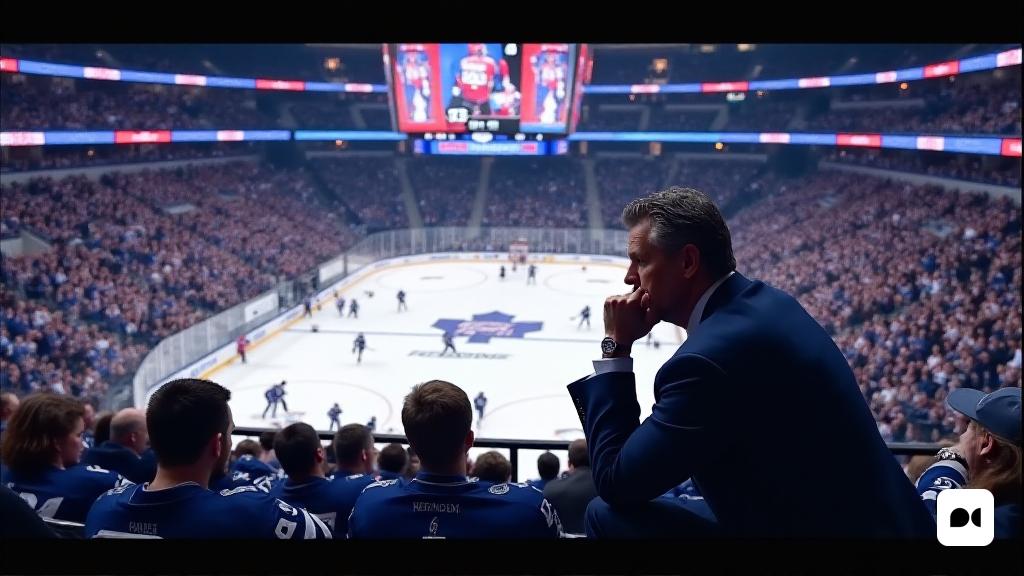Transitioning Leadership in the Hockey Realm
After over a decade at the helm, Brendan Shanahan’s tenure with the Toronto Maple Leafs has come to an unexpected end. On a notable Thursday, Maple Leaf Sports & Entertainment confirmed that Shanahan’s contract will not be extended, marking a pivotal moment in the franchise’s history.
The Rebirth: A Commitment to Transformation
Unlike many teams that cautiously tiptoe around the notion of a rebuild, Shanahan boldly embraced it, fundamentally altering the Maple Leafs’ landscape. His decisive actions, including the trades of cornerstone players like Phil Kessel and Dion Phaneuf, signified a commitment to a comprehensive reconstruction of the team, both on and off the ice.
Creating a New Culture
Shanahan’s vision extended beyond player transactions; he aimed to cultivate a fresh organizational culture. By overhauling the coaching staff and revamping the scouting and PR departments, he laid the groundwork for a new identity that he would lead.
Strategic Moves: Hiring Babcock and Beyond
In a bold move, Shanahan lured Mike Babcock, one of the NHL’s most sought-after coaches, to Toronto in May 2015. This decision, taken at a time when the team’s potential was largely unproven, showcased Shanahan’s ambition and intent to elevate the franchise’s standing.
Changing Perceptions
While Babcock’s tenure was marred by challenges, his hiring was pivotal in reshaping the external perception of the Leafs. Shanahan’s gamble to bring in a top-tier coach signaled a serious intent to revitalize the team’s fortunes.
Drafting Stars: Marner and Matthews
Shanahan’s influence was evident during the crucial 2015 NHL Draft. The decision to select Mitch Marner with the fourth overall pick, despite initial debates about drafting a defenseman, underscored his commitment to skill over conventional wisdom. The subsequent selection of Auston Matthews in 2016 further solidified Shanahan’s vision for a dynamic, high-scoring team.
The Leadership Shuffle: Lamoriello and Dubas
Bringing in veteran executive Lou Lamoriello in 2015 was another strategic move by Shanahan. Lamoriello’s experience proved beneficial in expediting the rebuild, although his tenure was short-lived. The promotion of Kyle Dubas to general manager in 2018 marked a significant shift towards a more modern, analytics-driven approach to team management.
Dubas’ Vision vs. Shanahan’s Legacy
Dubas brought a fresh perspective, focusing on skill and adaptability. His decisions, including the signing of star players like John Tavares, reflected a commitment to assembling a competitive team, yet the ultimate results remained elusive.
The Kadri Trade: A Defining Moment
One of the more controversial decisions during Shanahan’s time was the trade of Nazem Kadri, a player whose tenacity and skill became sorely missed. This trade, following Kadri’s disciplinary issues, raised questions about the long-term vision for the roster and highlighted the delicate balance between discipline and talent.
Coaching Changes and Their Impact
The transition from Babcock to Sheldon Keefe was another critical juncture in Shanahan’s journey. While Keefe’s appointment was intended to align with the team’s evolving strategy, the decision to retain him after playoff failures proved contentious and left many questioning the leadership’s resolve.
Final Reflections: A Legacy Under Scrutiny
Shanahan’s departure comes as the Leafs continue to grapple with their playoff shortcomings. Despite the strides made under his leadership, the team’s inability to advance significantly in the postseason casts a shadow over his accomplishments. As the organization prepares for a new chapter, Shanahan’s influence will undoubtedly linger, leaving fans to ponder what might have been.
As the Maple Leafs embark on this new journey, the lessons learned from Shanahan’s era could serve as both a guide and a cautionary tale for future leaders in the pursuit of hockey excellence.

